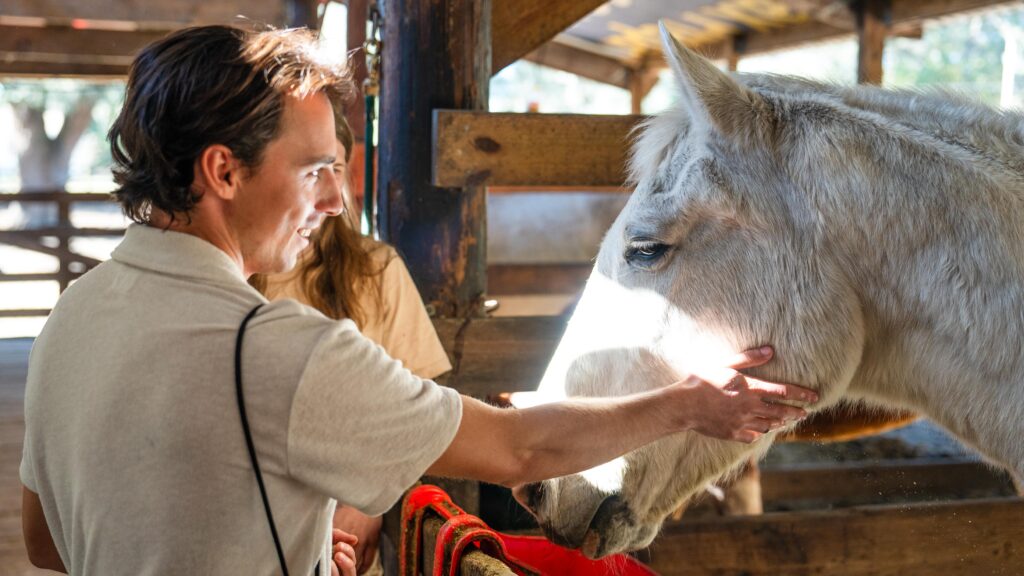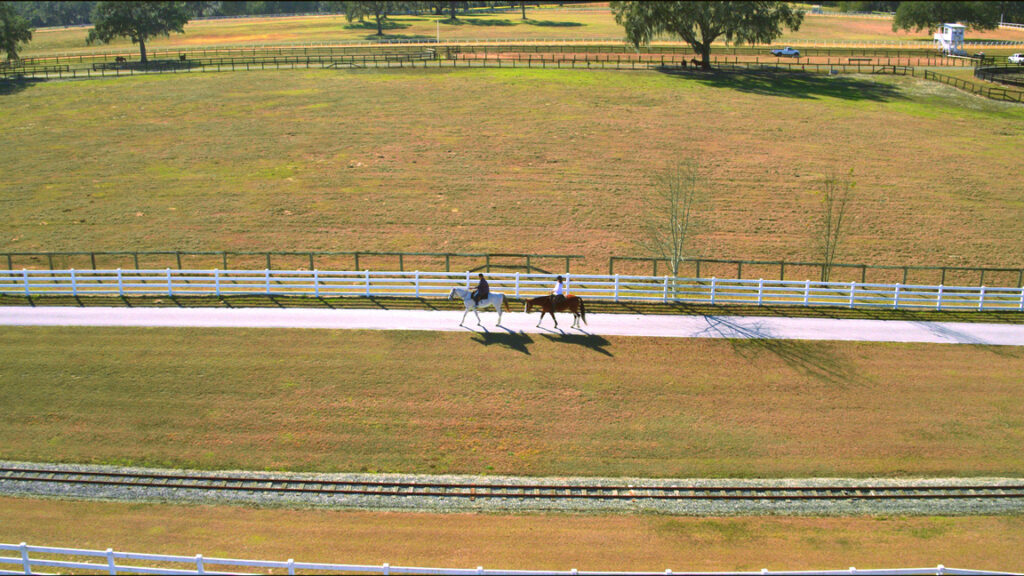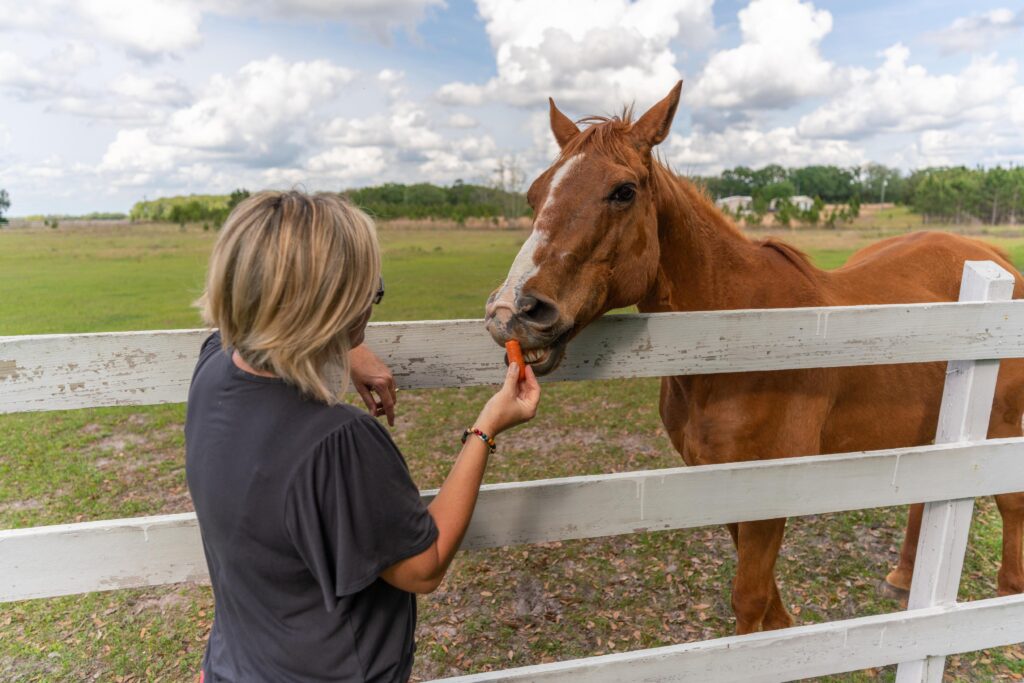Why Horse Farms are Essential to Protecting the Florida Wildlife Corridor
When most people picture Florida conservation, they think of swamps, longleaf pine forests, and mighty rivers. But there’s another landscape that quietly does a lot of the heavy lifting for nature and communities: the horse farms and working pastures of central Florida. These working lands are more than beautiful open space—they are vital pieces of the Florida Wildlife Corridor, economic engines for rural communities, and places where people connect to the land through recreation and tradition.
A Live Wildly Foundation perspective
Words by Meredith Budd, Live Wildly Deputy Director
 Photo by Emergent Media/Visit Florida
Photo by Emergent Media/Visit Florida
Working lands = connected lands
Horse farms tend to be large, connected properties with pastures, pine forests, and wetlands—exactly the kinds of land that help keep natural areas linked across a rapidly developing landscape. In a state where development pressure fragments habitat, keeping these areas intact preserves movement routes for wide-ranging wildlife (think deer, turkey, bobcat, and the many smaller species that depend on unbroken habitat). That connectivity is the core purpose of the Florida Wildlife Corridor: to link conserved lands so animals, water, and ecosystems can function across generations.
Because many horse farms are actively managed rather than heavily developed, they act like “soft” buffers between intact public reserves and suburban or industrial growth. Protecting working farms helps prevent bottlenecks in wildlife movement and keeps ecological processes like seasonal migrations, gene flow, and fire-adapted landscape dynamics alive.
 Photo by Spark/Visit Florida
Photo by Spark/Visit Florida
Environmental benefits beyond habitat
Horse farms provide a surprising list of ecosystem services:
- Water protection and recharge. Pastures, forests, and wetlands on farms help slow runoff, filter pollutants, and recharge aquifers that feed springs and rivers downstream.
- Carbon storage and soil health. Intact soils and perennial vegetation sequester carbon and maintain fertile soils that resist erosion.
- Open-space wildfire management. Many working lands create a patchwork that can reduce the speed and intensity of wildfires when managed responsibly.
- Biodiversity refuges. Shrubbery, ponds, and remnant pine stands on farms often host pollinators, nesting birds, amphibians, and native grasses that otherwise would be squeezed out by development.
These services are local—benefiting the people who live nearby—and regional, because Florida’s waterways and wildlife don’t recognize property lines.
Dive deeper: Assessment of Water-Related Benefits of the Florida Wildlife Corridor
 Photo by CycleHere Media/Visit Florida
Photo by CycleHere Media/Visit Florida
Economic value: rural jobs and a tourism draw
Horse farms are not just scenic backdrops—they are economic anchors.
- Agricultural and equine jobs. From stable hands and farriers to feed suppliers and transport workers, horse farms support a network of livelihoods in rural counties.
- Small business ecosystems. Farriers, trainers, feed stores, equine vets, tack shops, and boarding facilities all circulate money locally.
- Event and tourism revenue. Equestrian shows, trail rides, clinics, and farm tours bring visitors who spend on lodging, food, fuel, and retail—dollars that keep small towns thriving.
- Stable Land Values. Protecting working lands helps reduce the ups and downs of real estate markets caused by urban sprawl. It also preserves the rural charm that draws both tourists and new residents.
Protecting farms through conservation easements, incentives, or targeted public investment supports jobs, a stable tax base, and vibrant rural economies.
Learn more at Connecting the Florida Wildlife Corridor – Economic Study
 Photo by Emergent Media/Visit Florida
Photo by Emergent Media/Visit Florida
Recreation, heritage, and community health
Horse farms are a cultural resource. For many central Floridians, these farms hold family histories, livelihoods, and traditions that knit communities together. They also provide accessible outdoor recreation that builds support for conservation:
- Trail riding and day rides. Public and private trail systems linked across working lands create meaningful outdoor experiences for riders of all ages.
- Youth programs and education. Riding lessons, 4-H programs, and farm visits introduce kids to land stewardship and animal care.
- Health and well-being. Time outdoors and working with animals has proven mental- and physical-health benefits—especially in rural areas with fewer recreational options.
When people form emotional and recreational connections with landscapes, they’re more likely to vote for and support conservation policies that protect those places.
Live Wildly Foundation works to elevate these solutions because they keep farms financially viable and landscapes ecologically functional.
 Photo by Maurice Rivenbark/Visit Florida
Photo by Maurice Rivenbark/Visit Florida
A call to protect what we already love
Central Florida’s horse farms are not an either/or choice between agriculture and conservation—they’re a win-win. When we protect working farms, we protect wildlife corridors, sustain rural economies, and preserve places where people learn to love the land.
If you care about the future of the Florida Wildlife Corridor, here are three simple ways to help today:
- Support local and state conservation measures that prioritize working lands.
- Visit and responsibly enjoy equestrian-friendly lands and events—connection builds protection.
- Talk with farmers and landowners about conservation easements and stewardship programs; encourage local officials to fund technical assistance.
At Live Wildly Foundation, we believe conservation must include the people who work the land. Protecting central Florida’s horse farms is protecting the long-term health of the Corridor—and the communities that depend on it. Join us in keeping these fields open, these trails connected, and this heritage alive.

